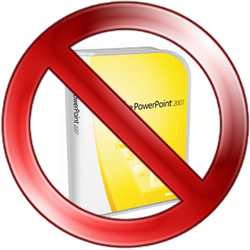Strategy
The Myth of Goal Setting
Posted on June 26th, 2008.
One of the most often repeated stories to back up the importance of setting clear goals and targets is the “Yale 1953 Goals Study”.
The story takes many forms – but essentially says that in 1953, researchers surveyed Yale's graduating seniors to determine how many of them had specific, written goals for their future. Twenty years later, the researchers checked with the surviving class members and found that the 3% who had written goals had accumulated more personal financial wealth than the other 97% combined.
It's a powerful story with a seductive message often told by consultants, coaches and self-help gurus. Unfortunately, it's just not true. No such study exists.
I seem to be spending much of my time debunking management myths nowadays (see Debunking the myths of non-verbal communication and Challenging the 80:20 rule).
This one has been brought back to my attention by a seminar I recently attended run by some business coaches from one of the world's largest coaching organisations.
In this case, the presenters even got the myth wrong – they said it was based on research at Harvard (a mistaken-retelling first done by Bill Phillips in his Body for Life book). They even went into great detail drawing pyramids and talking about how the researchers had gone back 10 years later again to confirm their findings.
Now I don't know if they were just making all this extra stuff up themselves, or if they themselves had been misled by their organisation – but either way, I was flabbergasted at how they were prepared to “educate” their seminar attendees so strongly on something which they hadn't bothered to check out.
Fast Company magazine, however, did check out the story.
They spoke to self-help guru after self-help guru – each passing them on to another guru as the source of their information – yet each happy to write and speak about the study as fact without checking it out. The original source was eventually tracked as far back as Zig Ziglar whose assistant told the magazine that Ziglar's source was hard to track down as he “reads a lot”.
Thankfully, the researchers were rather more conscientious. They followed up with the secretary of the class of 1953 and a research associate at Yale who told them that from personal experience and an exhaustive search of the archives: there was no such study.
Now this doesn't mean that written goals aren't important. Logic and much anecdotal evidence tells us that writing down your (or your company's) goals can be very helpful in “keeping you honest” and focusing on them. But they probably aren't as important as the story implies.
Worse: the story also implies that all that was needed to achieve great wealth was to write down goals. Nothing about the persistence and pain needed to stick to them – or the thought and creativity needed to make the goals happen.
For me it also acts as a huge Caveat Emptor for buyers of consulting, training and coaching services. If the people you are considering to be your advisors can't even take the time to check out whether one of their core assertions is actually true or not – how much can you trust their other advice?
And a message for fellow consultants and trainers: check your facts. You do our profession a great disservice by mindlessly repeating “facts” and advice that may not be true at all.
Ian
 Almost every company I've worked for has done regular “loss reviews” when they've failed to win big bids. It was almost a knee-jerk raction by management – “how can this possibly have happened?” – despite the fact that the sales team often knew well in advance that they weren't going to win.
Almost every company I've worked for has done regular “loss reviews” when they've failed to win big bids. It was almost a knee-jerk raction by management – “how can this possibly have happened?” – despite the fact that the sales team often knew well in advance that they weren't going to win. It's accepted wisdom in marketing and sales nowadays that every business needs a strong Unique Selling Point (USP).
It's accepted wisdom in marketing and sales nowadays that every business needs a strong Unique Selling Point (USP).
 In 1998 researchers Jan Benway and David Lane coined the phrase “banner blindness” for the newly observed phenomenon that web users tended to ignore the colourful, animated banner adverts that had previously been thought to be more likely to be seen.
In 1998 researchers Jan Benway and David Lane coined the phrase “banner blindness” for the newly observed phenomenon that web users tended to ignore the colourful, animated banner adverts that had previously been thought to be more likely to be seen. It's a scenario played out in millions of sales meetings every year.
It's a scenario played out in millions of sales meetings every year. Everyone recognises the importance of having a clear vision for their business, and of setting specific, measurable objectives. And almost all businesses have clear sales targets for the year – and usually quarterly and monthly targets too.
Everyone recognises the importance of having a clear vision for their business, and of setting specific, measurable objectives. And almost all businesses have clear sales targets for the year – and usually quarterly and monthly targets too. It's probably the best-known and most-repeated rule in sales: 80% of your sales come from 20% of your customers. The implication is that you should focus the majority of your sales efforts on those 20% to maximise your returns.
It's probably the best-known and most-repeated rule in sales: 80% of your sales come from 20% of your customers. The implication is that you should focus the majority of your sales efforts on those 20% to maximise your returns. There's an excellent
There's an excellent